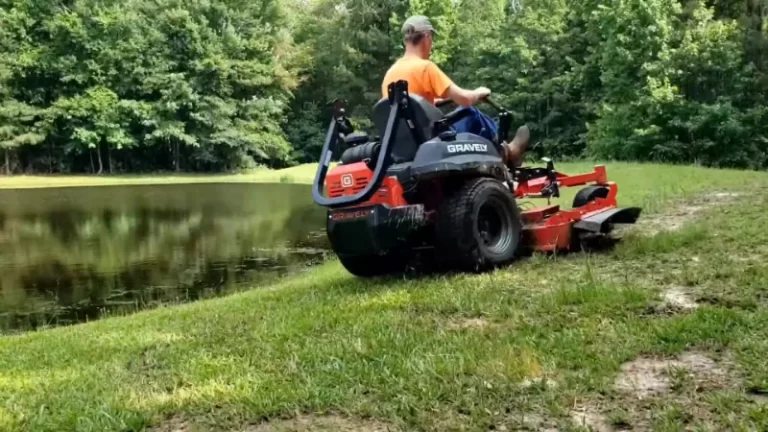Are Sono Tubes Necessary?

Sonotubes, also known as concrete forms, are cylindrical cardboard tubes used to pour concrete into and create piers or foundations for buildings and other structures. They are a popular choice among builders due to their ease of use and versatility.
However, the question of whether or not they are necessary has been a topic of debate among construction professionals. Some argue that Sonotubes provide added strength and stability to the finished pier, while others believe that they are only necessary for aesthetic purposes.
In this article, we will explore the arguments for and against using Sonotubes and discuss the factors to consider when deciding whether or not to use them in a construction project.
You'll Learn About
What Are Sono Tubes?
Sonotube, also known as a concrete form, is a cylindrical cardboard form used to pour concrete into. It is often used to create piers or foundations for buildings or other structures. Some people believe that using a Sonotube can provide added strength to the finished pier because it helps maintain the shape of the footing and reduces the chance of the sides of the footing collapsing.
Others believe that the Sonotube provides no added strength and is only necessary for aesthetic purposes. There is no conclusive answer on whether or not to use a Sonotube, as it depends on the specific conditions and the preference of the builder.
In general, it is important to follow local building codes and to use proper techniques when pouring concrete to ensure the structural integrity of the finished product.
Benefits of Sono Tubes
Sonotubes offer a versatile, cost-effective, and efficient solution for residential and commercial foundation construction. Their consistent quality, durability, and esthetically pleasing appearance make them an attractive option for many builders. Additionally, their environmentally friendly and moisture-resistant properties make them a responsible choice for those looking to minimize their impact on the environment.
Easy to Install
Sonotubes are lightweight and easy to handle, making them an ideal choice for quick and easy installation, without the need for heavy machinery.
Cost-effective
Compared to other foundation options, sonotubes are relatively inexpensive, making them a cost-effective solution for many construction projects.
Durable
Once filled with concrete, sonotubes become solid, cylindrical pillars that are strong and durable, able to support the weight of a structure for many years.
Versatile
Sonotubes can be used for a variety of structures, from residential homes to commercial buildings, and are suitable for both deep and shallow foundations.
Consistent Quality
Sonotubes are made from a standardized, high-quality cardboard material that ensures consistent quality and strength for every column poured.
Efficient
The use of sonotubes helps to streamline the construction process, reducing the time and labor needed to pour concrete foundations.
Esthetically Pleasing
With a smooth and uniform appearance, sonotubes can be an attractive option for foundations that will be visible in the finished structure.
Environmentally Friendly
Sonotubes are made from recycled materials and are recyclable after use, making them an environmentally friendly option for foundation construction.
Resistant to Moisture
Cardboard tubes used for sonotubes are treated with a moisture-resistant material, which helps to prevent rot and decay, even in wet conditions.
Customizable
Sonotubes come in a variety of sizes and can be cut to custom lengths to meet the specific needs of each construction project, ensuring a perfect fit every time.
The Argument for Using Sonotubes
The argument for using Sonotubes is based on the belief that they provide added strength and stability to the finished pier. Some proponents argue that the tube helps maintain the shape of the footing and prevents the sides from collapsing, which can occur due to the weight of the structure or external forces such as soil movement or water pressure.
This added strength can be particularly important in cases where the soil conditions are poor or the structure will be subjected to heavy loads. Additionally, using a Sonotube can help ensure that the footing is properly shaped and aligned, which is important for the overall stability and integrity of the structure.
Overall, those who argue for using Sonotubes believe that they are a valuable tool for creating strong and stable foundations.
The Argument Against Using Sonotubes
The argument against using Sonotubes is based on the belief that they provide no added strength to the finished pier and are only necessary for aesthetic purposes. Some opponents argue that the concrete poured into the tube will have the same strength and stability whether or not the tube is used.
In this view, the tube serves only to create a visually pleasing finished product, but does not contribute to the overall strength and stability of the structure. Additionally, using a Sonotube can limit adjustability if the post holes are not perfectly straight, as the angle of the tube will dictate the angle of the finished pier.
This can be a problem if adjustments need to be made during the construction process. Overall, those who argue against using Sonotubes believe that they are not necessary for creating strong and stable foundations and can be skipped in favor of other methods.
Factors to Consider When Deciding to Use Sonotubes
When deciding whether or not to use Sonotubes in a construction project, there are several factors to consider. First and foremost, it is important to consider local building codes, as these may specify the requirements for foundations and piers in your area.
Some codes may require the use of Sonotubes or other forms, while others may not. It is essential to follow these codes to ensure that your structure is safe and meets all legal requirements.
Another factor to consider is soil conditions. In some cases, the soil may be too soft or unstable to support a structure without the use of additional reinforcement, such as a Sonotube. On the other hand, if the soil is strong and stable, a Sonotube may not be necessary.
It is important to assess the soil conditions at your construction site and determine if a Sonotube or other reinforcement is necessary.
Finally, personal preference can also be a factor in the decision to use Sonotubes. Some builders may prefer to use them because of the added strength and stability they provide, while others may prefer to skip them due to the added cost and potential limitations on adjustability. Ultimately, the decision to use Sonotubes should be based on a combination of these factors and the specific circumstances of the construction project.
Tips to Consider When Using Sonotubes
Here are some additional tips to consider when using Sonotubes:
- Make sure to follow the manufacturer’s instructions for installation and use of the Sonotube. This will ensure that you are using the product correctly and getting the best results.
- Use a level to ensure that the Sonotube is properly aligned and plumb. This will help ensure that the finished pier is straight and stable.
- Make sure to leave enough space around the Sonotube for the concrete to be poured. If the tube is too close to the edges of the hole, the concrete may not be able to fully fill the space, which could result in a weaker foundation.
- Use a release agent to prevent the Sonotube from sticking to the cured concrete. This will make it easier to remove the tube and create a smooth, finished surface.
- Consider using a reinforcing bar (rebar) to add additional strength to the finished pier. This can be especially helpful in cases where the structure will be subjected to heavy loads or the soil conditions are poor.
- Use caution when removing the Sonotube to prevent damaging the finished pier. It is generally best to wait until the concrete has fully cured before attempting to remove the tube.
Consider using alternative forms, such as plastic or metal forms, if you prefer not to use Sonotubes. These forms may have different benefits and drawbacks, so it is important to research and compare them to determine which is the best choice for your project. Overall, it is important to carefully consider all options and use proper techniques to ensure the best results when using Sonotubes or any other form in construction projects.
Conclusion
In conclusion, the use of Sonotubes in construction is a matter of personal preference and depends on the specific circumstances of the project. Some builders believe that they provide added strength and stability to piers and foundations, while others argue that they are only necessary for aesthetic purposes and provide no added benefits.
When deciding whether or not to use Sonotubes, it is important to consider factors such as local building codes, soil conditions, and personal preference. Ultimately, the most important thing is to follow proper techniques and adhere to local building codes to ensure the structural integrity and safety of the finished product.



